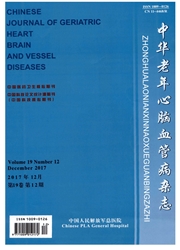

 中文摘要:
中文摘要:
目的本研究通过观察脑卒中后抑郁(poststrokedepression,PSD)大鼠给予抗抑郁药物西酞普兰干预后,观察下丘脑TNF—α的表达变化,并探讨PSD发病机制和潜在的药物治疗机制。方法经旷场实验筛选出18只大鼠,随机分为对照组6只,另12只大鼠经过单侧大脑中动脉线栓法后,又随机分为PSD组6只和西酞普兰组6只,经慢性不可预见性应激后,通过旷场实验和糖水实验观察各组大鼠的行为学改变,定量PCR检测各组大鼠下丘脑TNF—αmRNA的表达改变。结果与对照组比较,PSD组的水平活动、直立探索和糖水喜好明显下降,差异有统计学意义(P〈O.01);西酞普兰组的水平活动、直立探索和糖水喜好较PSD组明显升高,差异有统计学意义(P〈0.05)。PSD组下丘脑TNF—αmRNA水平较对照组明显升高,差异有统计学意义(P〈0.05);西酞普兰组下丘脑TNF-αmRNA水平较PSD组明显下降,差异有统计学意义(P〈o.05)。结论抗抑郁药物西酞普兰可通过调节下丘脑TNF—α治疗PSD。
 英文摘要:
英文摘要:
Objective To study the expression of TNF-α in hypothalamus of rats by observing post stroke depression and its pathogenesis after citalopram treatment. Methods Eighteen rats that underwent open field test were randomly divided into the control group(n= 6) and experimental group(n=12). The rats in experimental group were further divided into post stroke depression group (n=6) and citalopram treatment group(n=6) after left middle cerebral artery occlusion. Behaviors in these two groups were observed by open field test and sugar-water test, respectively. Expression of TNF-α mRNA in hypothalamus of rats was detected by quantitative polymerase dhain reaction. Results The levels of horizontal and vertical activities and the preference for sug- ar-water were significantly lower in post stroke depression group than in control group(P〈0.01) and significantly higher in citalopram treatment group than in post stroke depression group(P〈 0. 05). The TNF-α mRNA expression level in hypothalamus was significantly higher in post stroke depression group than in control group(P〈0.05) and significantly lower in post stroke de- pression group than in citalopram treatment group(P〈0.05). Conclusion Citalopram exerts its therapeutic effect on post stroke depression by down-regulating the expression of TNF-α in hypo- thalamus of rats.
 同期刊论文项目
同期刊论文项目
 同项目期刊论文
同项目期刊论文
 期刊信息
期刊信息
